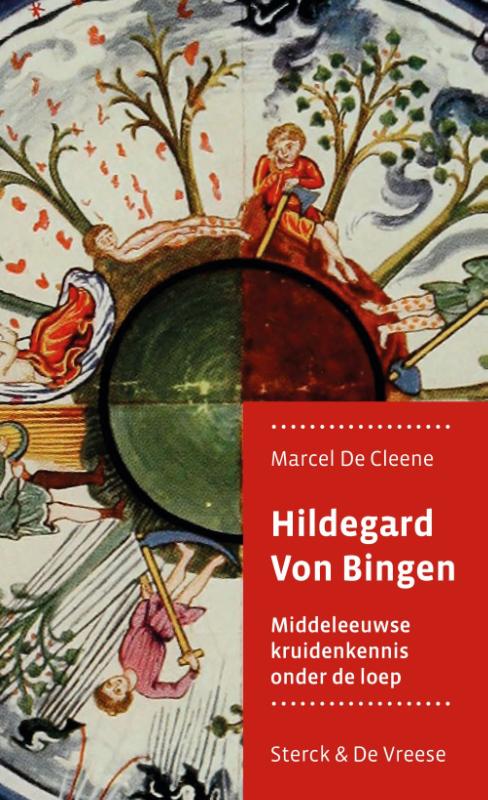Hildegard Von Bingen
€ 27,90
De Duitse abdis Hildegard von Bingen (1098-1179) was in haar tijd een bijzondere persoonlijkheid. Door haar kennis en wijsheid trok ze vooraanstaande geestelijken en edellieden aan die haar om raad kwamen vragen. Ze liet vele geschriften na, waarin ze haar ideeën en visioenen neerschreef over muziek, theologie, mineralogie, kosmologie, filosofie, taalkunde, ethiek en natuurlijk ook kruidengeneeskunde en gezondheidsleer. Ze pleitte voor een holistische aanpak en een leven in harmonie met de natuur en met de medemensen. Want alles stond met alles in verbinding. Daarin was ze haar tijd ver vooruit.
Dit boek spitst zich vooral toe op haar natuurwetenschappelijke visie, in het bijzonder op de kruidenkennis. Haar kruidenadviezen worden vergeleken met een keur van andere historische kruidenboeken, zoals die van Dodoens of Lobelius – en met de hedendaagse kennis over dit onderwerp. Ze doorstaan niet altijd meer de toets van de wetenschap, maar veel van wat ze schreef wordt nog steeds toegepast in de homeopathie.
•••••••••••••••••••
Marcel De Cleene is plantenfysioloog en emeritus aan de Universiteit Gent. Bij uitgeverij Sterck & De Vreese verschenen
van zijn hand veelgeprezen boeken als De Historia Naturalis. De geschiedenis van de kruidengeneeskunde in de Lage Landen; De Naturalis Historia. Vergeten toepassingen van planten en Compendium van rituele planten in Europa.
Gerelateerde boeken
-
Mensenjacht
Het optreden van de Sicherheitspolizei in Drenthe tijdens de Tweede Wereldoorlog€ 39,90 -
-
De Romeinse heerbaan
€ 24,95Van west naar oost, dwars door Vlaanderen, liep vroeger de Romeinse heerbaan van Kassel naar Tongeren. Hij verbond de kuststad Boulogne-sur-Mer met de Rijnstad Keulen en maakte deel uit van een groot en complex netwerk van (water)wegen dat Rome verbond met de verste uithoeken van het Romeinse Rijk. Men spreekt in dat verband trouwens terecht van militaire wegen, De Romeinen slaagden erin om uiteindelijk een voor die tijd schitterend wegennet te realiseren van nagenoeg 120.000 kilometer.
Hoe werden die wegen aangelegd? En hoe bouwden ze bruggen over rivieren en beken? Wie stapten of reden met hun karren over die wegen? Hoe ontstonden de steden? Hoe verliep de bevoorrading? Van de Romeinse weg Maastricht-Tongeren-Tienen-Kassel zijn maar weinig stuken in hun ‘oorspronkelijke’ landschappelijke toestand bewaard gebleven. De mooist bewaarde segmenten liggen tussen Tienen en Maastricht. Zij vormen samen een min om meer aaneensluitend archeologisch relict. Daarom is dit boek specifiek aan de geschiedenis van dit stuk van de heerbaan gewijd.
-
De Leeuwarder Weeshuisrekeningen 1541 – 1608
Spiegels van het dagelijks leven in de zestiende eeuw€ 75,00De Leeuwarder Weeshuisrekeningen 1541 – 1608
€ 75,00Met als stichtingsjaar 1534 is het Old Burger Weeshuis in Leeuwarden een van de oudste burgerweeshuizen in Nederland. Vrijwel vanaf het begin is een administratie bijgehouden van zijn inkomsten en uitgaven in rekenboeken en jaarrekeningen. Zij bevatten een schat aan informatie over aard, kwaliteit en prijs van voedingsmiddelen, kleding en schoeisel, bouwmaterialen en gereedschappen, over het boerenbedrijf, maar ook over verdere uiteenlopende zaken als de werkgelegenheid (ambacht en losse arbeid), huizen en landerijen, lonen, huren, renten en legaten, verkeer en vervoer, de inrichting van de stad, het weer en de relatie tussen Leeuwarden en zijn omgeving. Ze bieden zowel professionele onderzoekers als amateurs ‘elck wat wils’. De Leeuwarder Weeshuisrekeningen 1541-1608 geeft als nagenoeg ononderbroken bron een beeld van het dagelijks leven in Leeuwarden en zijn omgeving gedurende het grootste deel van de zestiende eeuw zowel als de beginjaren van de zeventiende eeuw. Geograaf en historicus Meindert Schroor heeft met zijn transcriptie en inleiding op de rekeningen van de destijds als ‘Arme Weeshuys’ aangeduide instelling een van de belangrijkste historische bronnen voor de sociaaleconomische geschiedbeoefening van Friesland toegankelijk gemaakt.
With summary in English/Met Engelse samenvatting.





